Infection-Related Glomerulonephritis
- PMID: 36751423
- PMCID: PMC9677723
- DOI: 10.1159/000515461
Infection-Related Glomerulonephritis
Abstract
Background: There has been a long, storied relationship between various bacterial infections and glomerular injury, which is now encompassed under the term of infection-related glomerulonephritis (GN). The clinical and pathologic manifestations vary depending on the duration, magnitude, and underlying pathogen associated with the inciting infectious process. A brief and acute episode may lead to a self-limiting glomerular manifestation while a chronic or repetitive infection can result in persistent and irreversible injury. In this review, we will discuss the clinical and pathologic findings associated with the infection-related glomerulonephritides.
Summary: An acute exudative GN with an influx of neutrophils is the most characteristic morphologic alteration associated with infection-related glomerular injury. The immunofluorescence staining pattern often reveals prominent complement component C3 deposition in both capillary walls and mesangial regions with or without accompanying immunoglobulin. Large subepithelial electron-dense deposits known as "humps" are the hallmark ultrastructural finding; however, these features can also be present in C3 glomerulopathies, which are often triggered by infections and may have similar underlying abnormalities in alternative pathway complement activation. In addition, other glomerular injuries can simultaneously be present along with infection-related GN, such as diabetic nephropathy, lupus nephritis, or immunoglobulin A nephropathy, constituting a true diagnostic challenge for the pathologist.
Key messages: Bacterial infection-related GN represents a spectrum of glomerular injury with variable clinical and pathologic presentations. The pathologic findings can show overlap with other glomerular diseases, and different forms of infection-related GN vary in terms of prognosis and treatment approach.
Keywords: Complement; Kidney biopsy; Renal pathology.
Copyright © 2021 by The Author(s). Published by S. Karger AG, Basel.
Conflict of interest statement
Anthony Chang has served as a consultant for Amicus Therapeutics, Alexion Pharmaceuticals, GlaxoSmithKline, and PathAI. He is a member of the speakers bureau for Alexion Pharmaceuticals. He receives royalties from Elsevier.
Figures



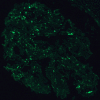
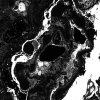
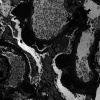
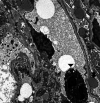

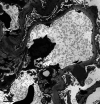






References
-
- Nasr SH, Markowitz GS, Stokes MB, Said SM, Valeri AM, D'Agati VD. Acute postinfectious glomerulonephritis in the modern era: experience with 86 adults and review of the literature. Medicine. 2008;87((1)):21–32. - PubMed
-
- Kambham N. Postinfectious glomerulonephritis. Adv Anat Pathol. 2012;19((5)):338–347. - PubMed
-
- Hunt EAK, Somers MJG. Infection-related glomerulonephritis. Pediatr Clin North Am. 2019;66((1)):59–72. - PubMed
-
- Courser WG, Johnson RJ. The etiology of glomerulonephritis: roles of infection and autoimmunity. Kidney Int. 2014;86:905–914. - PubMed
Publication types
LinkOut - more resources
Full Text Sources
Miscellaneous
